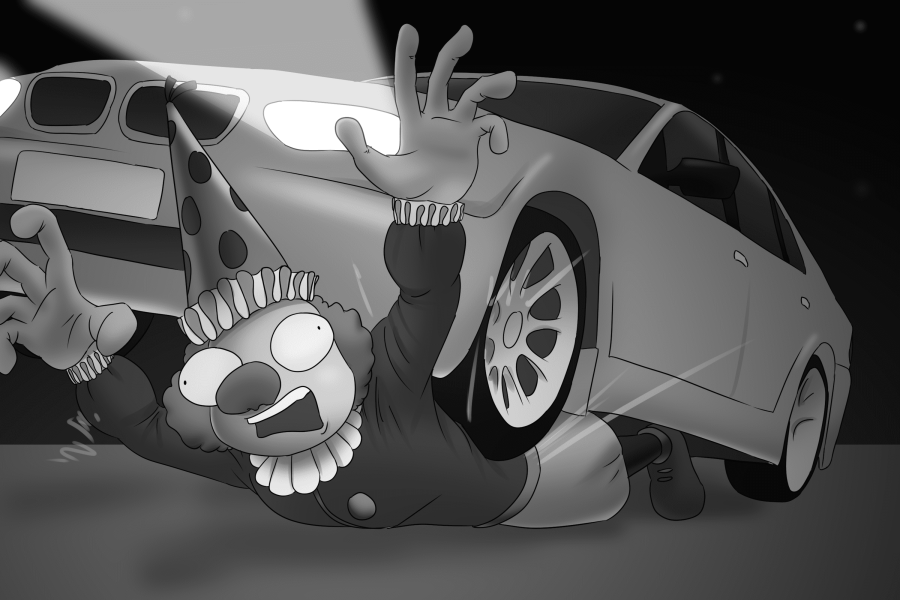Once every three decades, Pennywise the Dancing Clown, a primordial manifestation of evil, reemerges to feast on children and bask in humanity’s fear. At least, that was the premise of Stephen King’s classic novel “It,” published in September 1986. How appropriate that exactly 30 years later, hundreds of menacing clown sightings have suddenly come in from people around the world?
One can track the “patient zero” of this year’s rash of evil clowns to an August sighting in Greenville, South Carolina. By early October, incidents were reported in Canada, UK and Australia. The phenomenon grew exponentially throughout October, eventually reaching nearly every U.S. state, nine provinces of Canada, and 18 countries across Europe, Oceania, and the Americas.
Some have suggested this began as a viral marketing campaign for the upcoming film adaptation of the novel “It,” set to be released next year. Others think the originators were simply dedicated Stephen King fans who knew the lore of Pennywise and started the prank in homage. Regardless of original intent, the clown sightings quickly became a meme both on the internet and in other mass media, spreading the news of yet another ridiculous testament to a ridiculous year.
Its memetic fame on the internet propelled the clown sightings into a global context, practically inviting more people to participate. Due to the extent of our social networks, in a process some call Stand Alone Complex — emergent copycat behavior with no coordinated planning — can create the illusion of mass-concerted effort. The world’s interconnectedness via media has led enough people to independently dress up as evil clowns to the extent that a worldwide clown army has formed with no centralized structure.
Unfortunately, this army has not had solely benign motives. In California alone, a clown tried to abduct an infant, while others were spotted brandishing kitchen knives and, in one case, a gun, and several schools were disrupted by “clown-related threats.” These range from elementary schools all the way to colleges like Cal State Northridge and UC Davis, where a clown harassed students with an unidentified weapon, according to campus news sources.
Elsewhere in the country, altercations between clowns and civilians have led to arrests and physical fights. Ordinary criminals have also taken advantage of the clown scare by disguising themselves as clowns during burglaries and robberies. In response, students and civilians on college campuses in Texas, Indiana, Pennsylvania and New York have formed “Anti-Clown Armies” to go on “clown hunts,” wielding weapons like baseball bats and even guns.
Not all the clowns have had violent intentions, but because some have, police and wary civilians react more severely across the board despite no actual affiliation between violent and nonviolent clowns across state and country borders. In one case in Kentucky, a man shot in the direction of a woman walking her dog because he mistook her for a clown. Many people already deal with the fear of clowns — coulrophobia — or at least feel uncomfortable to some degree because clowns in masks or heavy makeup fall into the “uncanny valley” of seeming human enough for us to assign motives but too inhuman to read these motives.
Professional clowns outside of 2016’s evil clown surge must now bear exacerbated stigma against all clowns, an unjustified one that impacts real livelihoods. The World Clown Association has condemned the fad and the “evil clown” trope in general for misrepresenting what clowns do. McDonald’s has reportedly sidelined Ronald McDonald, their clown mascot of over 50 years, due to the “current climate around clown sightings” according to McDonald’s spokeswoman Terry Hickey.
Because some hooligans in clown clothes took a prank too far and some reactionary civilians responded to fear with violence, the hysteria will only escalate until we reexamine our own role in this phenomena and decide how best to stop perpetuating it. Target and other companies have scaled back their sales of clown costumes and paraphernalia, often at the behest of police despite the fact that the clown craze has increased sales. In all, the Great Clown Scare of 2016 may have started with harmless intent, but via mass media, the trend spread rapidly to a massive scale, affecting the economy, law and order, and people’s lives.







